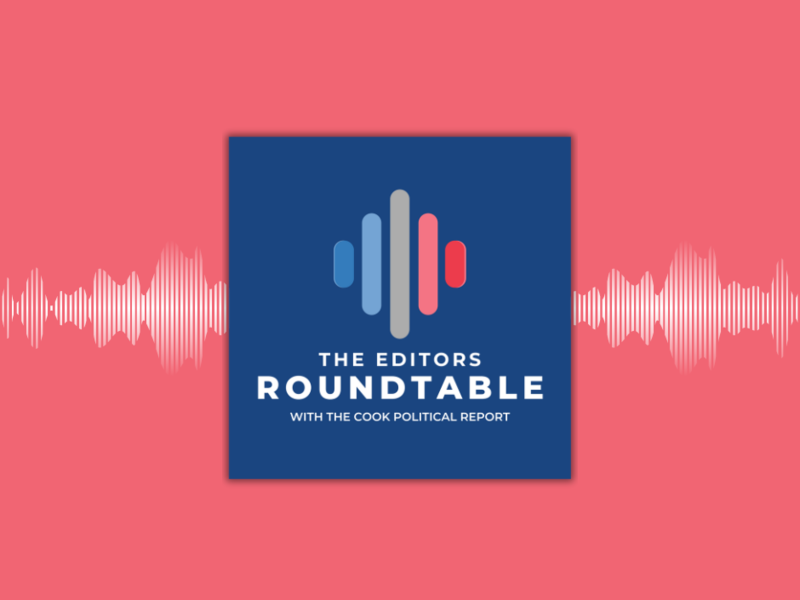
The most dramatic change over the last six weeks in the midterm election picture is clearly in the Senate, but the House situation has subtly changed as well.
Not long ago, the most likely outcome for the Senate was either no net change at all, or a shift of one seat, so the Senate would remain under GOP control, with the majority holding 50-52 seats. Today, a Republican net gain of a seat or two seems most likely, moving the GOP up to either 52 or 53 seats, though a gain of three seats or no net change are entirely possible. There remains some chance of Democrats picking up two seats and a majority, but those odds are long, no better than 1 in 5, and seemingly getting longer. Once you saw Republicans and conservative voters coming home and getting energized for the first time this election cycle, on top of this lopsided Senate map of seats overwhelmingly in GOP-friendly states, Democrats hopes went down precipitously.
In the House, Democrats remain heavily favored to capture a majority; the change is that their chances of blowing the House wide open with a gain of 40-50 seats or more have diminished. In the suburban-oriented districts where most of the competitive House races are, things remain extremely challenging for Republicans. A large gender gap driven by suburban, college-educated, and younger women remains a very strong dynamic. But the more rural- and small-town-oriented districts—those with substantial numbers of Republicans, conservatives, and Trump backers—are now fully awake and engaged, moving some of those districts back away from the edge of competitiveness. Republicans were looking quite vulnerable through the summer in districts that one would never guess they would have to worry about.
Today, Democrats seem more in line to score a net gain of between 20 and 40 seats. Democrats need a pickup of 23 seats, so a continued Republican majority is possible, just fairly unlikely. A 30-seat gain is at the center of that bell curve of probabilities. A week or two ago, the broader estimate of 25-45 seat Democratic pickup seemed quite plausible, with a 35-seat gain in the middle quite likely, but there was a caveat then—that the odds of Democratic gains north of 45 seats was greater than under 25 seats. Now, a gain of over 40 is still more likely than under 20, but the GOP is in a bit less peril.
Back in the Senate, the Republicans' best chances of knocking out Democratic incumbents remain with Rep. Kevin Cramer in North Dakota against Heidi Heitkamp, and in Missouri with state Attorney General Josh Hawley against Claire McCaskill. Neither race is over, but GOP chances in each are now better than ever.
In Florida, the race pitting GOP Gov. Rick Scott against incumbent Bill Nelson is a jump ball. No one knows how Hurricane Michael will affect things; the panhandle is the most reliably Republican area in the state, so disruption there could ding GOP hopes a bit. But Scott has proven himself to be a very skillful and decisive crisis manager in the past, and if that continues, it will be to his benefit (though arguably Scott might go crazy in the Senate, with its glacial pace).
Many believe that if Nelson wins, it might well be because the Democratic gubernatorial nominee Andrew Gillum, the African-American mayor of Tallahassee, pulls out a strong black vote, but others point to Scott’s assiduous courting of Latino voters in general and Puerto Rican voters in particular as a real plus for him. It is absolutely true that in this broad 2018 midterm-election context, a lack of enthusiastic support for Democrats among Latino voters is a glaring shortcoming, not a significant factor in some states and districts but a very big deal in some others.
To me, the open Republican-held seats in Arizona and Tennessee are two places where Democratic hopes have backslid the most in this post-Kavanaugh period, Democrats had been over-performing but Republican and conservative voters are snapping back into position, a real setback to Democratic hopes. Democrats still hope that a strong organization in Arizona pulls them across the finish line first.
The one place that still looks like a reasonably good chance for Democrats taking a GOP Senate seat is Nevada, where incumbent Dean Heller is holding close to Democratic Rep. Jacky Rosen, but Rosen still has the edge. Despite having all the money in the world, it still looks likely that Rep. Beto O’Rourke comes up short against Texas GOP incumbent Ted Cruz. Democrats will beat the point spread but those last couple of points are awfully tough, particularly with O’Rourke’s insistence on not going negative against Cruz.
One question that keeps coming back up is whether those who led the out-of-control demonstrations on Capitol Hill against the Kavanaugh nomination have any understanding of how much damage they did to Democrats and the party’s chances of winning a majority in the Senate. My guess is they don’t. But Senate Democrats probably do.
This story was originally published on nationaljournal.com on October 16, 2018









Subscribe Today
Our subscribers have first access to individual race pages for each House, Senate and Governors race, which will include race ratings (each race is rated on a seven-point scale) and a narrative analysis pertaining to that race.